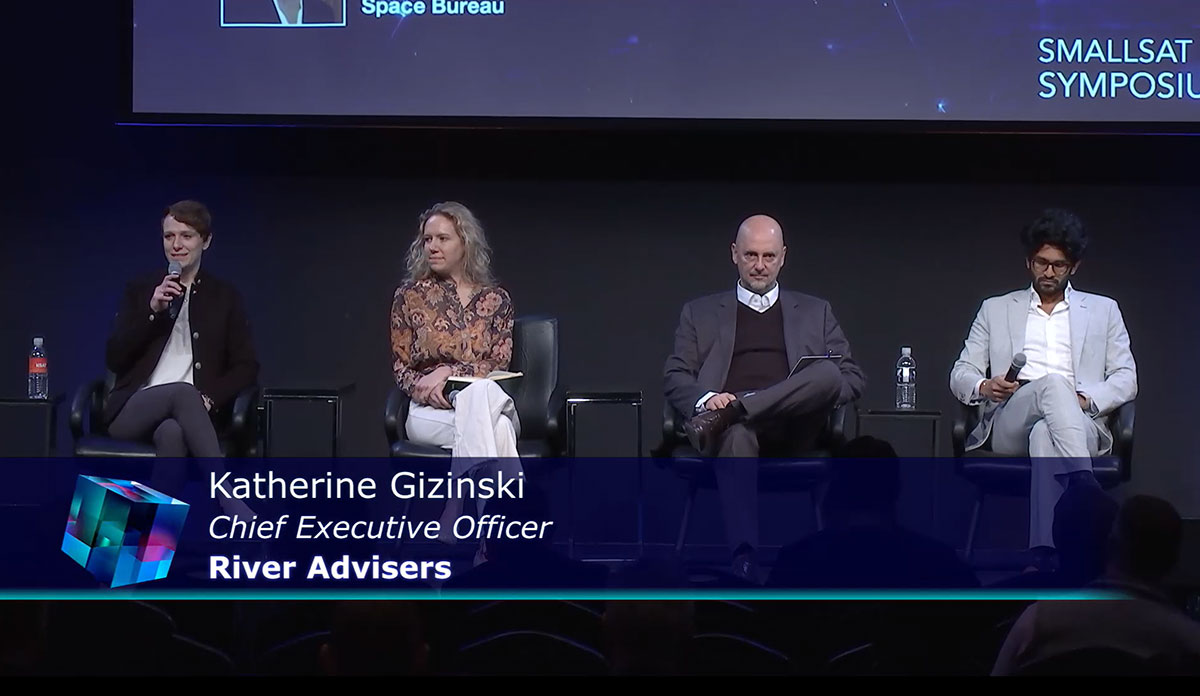 While the satellite community seeks to prevent further spectrum reallocation to terrestrial service providers, a growing “civil war” is emerging over spectrum between GSO and NGSO operators.
While the satellite community seeks to prevent further spectrum reallocation to terrestrial service providers, a growing “civil war” is emerging over spectrum between GSO and NGSO operators.
ALEXANDRIA, Va. — The recent World Radiocommunications Conference (WRC-23) was hardly “The Hunger Games,” but the ongoing conflicts over scarce spectrum resources have the potential to pit satellite operators against each other.
The fight over spectrum has typically been a defensive effort by satellite stakeholders to prevent reallocation to bandwidth-hungry mobile and terrestrial telecommunications service providers. The satellite community mostly held the line in Dubai last year—for example, the U.S. and others prevented regional terrestrial reallocation of spectrum used by SAR satellites. Satellite arguably gained ground, too, with a new primary allocation of Ku-band for fixed satellite service downlink and several WRC-27 agenda items focused on non-terrestrial issues.
“In past times, it’s likely that the satellite industry would not have been as successful,” said George John, senior associate at Hogan Lovells, during a SmallSat discussion of WRC-23. “It might have gotten steam-rolled. But it has gotten its act together and was able to go up against this very big behemoth—the terrestrial industry.”
At the same time, a new front opened in the spectrum wars between broadband providers in non-geosynchronous orbit (NGSO), especially LEO, and geosynchronous or GEO operators. The battle lines were drawn around the Equivalent Power Flux-Density (EPFD) limits, a spectrum-sharing framework implemented by the International Telecommunication Union (ITU) that NGSO operators argue is overly restrictive and GSO operators say is critical to interference-free service. While the WRC did not approve regulatory revisions to the framework, it did authorize formal studies for WRC-27.
“The spectrum battles nowadays are not either satellite vs. terrestrial or NGSO vs. GSO—it’s all of it,” said Patricia Cooper, President and Founder of Constellation Advisory, LLC. “The terrestrial battles tend to be about allocations and interference analysis — which bands are authorized for 5G, do they have enough spectrum to meet the demand and can 5G be introduced into traditional satellite bands without causing harm? The NGSO-GSO battles are about spectrum sharing rules, since NGSO and GSO systems are usually expected to coexist by using the same assigned frequency bands.”
An Inter-Satellite ‘Civil War’
GSO incumbents and space nations that rely primarily on GSO services have some reason for concern. The rapid proliferation of LEO mega-constellations raises questions about future interference between orbits, not to mention spectrum availability and collision-free orbits.
“Above and beyond LEO, what we’re seeing is an increase in civil war with respect to spectrum,” said Jacinta Tobin, Chief Revenue Officer at LeoLabs at the SmallSat Symposium. “It’s a finite resource and the demand for the resource is increasing exponentially.”
By 2032, Euroconsult estimates there will be approximately 28,800 satellites in orbit, up from approximately 8,400 today. Most of those future satellites will be in NGSO and tied to five mega-constellations—Starlink, OneWeb, Lightspeed, Kuiper and Guowang. Already, SpaceX’s Starlink has deployed nearly 5,300 satellites since 2019 and plans to send another 840 direct-to-cell sats in the first six months of 2024. To date, the FCC has authorized nearly 20,000 SpaceX satellites—possibly with more to come. Amazon Kuiper is ramping up the scheduled deployment of its broadband constellation and received FCC authorization for 3,236 LEO broadband satellites in the coming years. Meanwhile, China has stipulated as many as 13,000 satellites for the Guowong broadband constellation and reports indicate it could deploy another 12,000 satellites for the G60 Starlink project.
Regulatory bodies and governments, particularly the United States, have prioritized an environment to support NGSO broadband systems, which have advantages in latency and proven benefits for national security applications. However, the impact of multiple mega-constellations on legacy GSO operators is not entirely clear.
Article 22 of the ITU’s Radio Regulations was approved in 1998 to allow low-orbit satellites to provide fixed satellite services in multiple frequencies, including Ku- and Ka-band, which are widely used for GEO broadband links. The ITU rule established Equivalent Power Flux-Density (EPFD) limits on NGSO operators. This limit effectively protected GSO incumbents by limiting the RF emissions from NGSO systems individually and in the aggregate.
In an era of proliferated LEO constellations, GSO operators and stakeholders have wondered how they will continue covering spots where an NGSO satellite is downlinking. Some have also raised questions about determining the source of interference. Since LEOs have multi-beam payloads, rather than a fixed beam, how can another operator prove a particular LEO operator was the source of interference, rather than an airplane or terrestrial source?
Where You Stand Depends on Where You Sit
The possibility of an EPFD regulatory revision sparked intense debate over the last year which is likely to intensify. On the one side, GSO operators and advocates warn of “significant risk” in modifying power limits, such as the potential for harmful interference, service disruption and negative economic effects. Meanwhile, NGSO operators claim that EPFD limits effectively create exclusionary zones for LEOs while increasing the cost of satellite broadband service. They further argue that modern technologies can mitigate interference caused by higher-power NGSO links.
Some in the industry are taking a more nuanced view. In an interview with Space Intel Report, Intelsat VP for Spectrum Strategy Hazem Moakkit described the company’s approach as “pragmatic.” Intelsat has a distribution agreement with OneWeb (Eutelsat) for multi-orbit LEO-GEO satcom service and it is reportedly exploring opportunities in MEO. “The rules were written 25 years ago. The engineer in me says, OK, it doesn’t hurt to take a new look at something done so long ago and based on certain assumptions,” Moakkit said. That is why Intelsat wound up supporting a WRC study. “We did not go in thinking that these rules must be relaxed. We said only: we will study it.”
 A panel of experts discusses the outcomes of WRC-23 at the SmallSat Symposium, Feb. 6, 2024, in Mountain View, Calif. (Source: SmallSat Symposium/screenshot)
A panel of experts discusses the outcomes of WRC-23 at the SmallSat Symposium, Feb. 6, 2024, in Mountain View, Calif. (Source: SmallSat Symposium/screenshot)
There have not been many publicly reported incidents of interference between low-Earth and geosynchronous satellites, but it’s not clear how long that will last. As spectrum becomes more congested, it will be important for both operators and regulators to have tools to monitor harmful interference as well as technologies to mitigate it. Equipment and services to track RF interference will continue to be valuable as well as geolocation data to deconflict when interference does occur. There have also been proposals for a degraded throughput methodology for interference analysis. This would largely rely on new NGSO satellites using adaptive coding and modulation, which can allow them to maintain a connection at lower rates even with signal degradation.
Even with advances in technology, the situation is likely to remain contentious going forward, said Katherine Gizinski, CEO of River Advisors (formerly Mansat). “NGSO operators [are] taking a stance of ‘it’s time to update or modernize how these limits are set,’ and existing GSO operators [are] saying, ‘This stands to undermine an existing functional regulatory framework that is allowing services to be provided right now to customers,’” she told an audience at SmallSat. “With those two perspectives in the mix, I don’t think this topic will cool down anytime soon.”
Explore More:
Podcast: IEEE Co-Chair Discusses the Satellite Broadband Communication Ecosystem
FCC and WRC: Regulatory Impacts on the Satellite Industry
Crowded Spectrum Pushing Satcom Operators into Q/V Band
